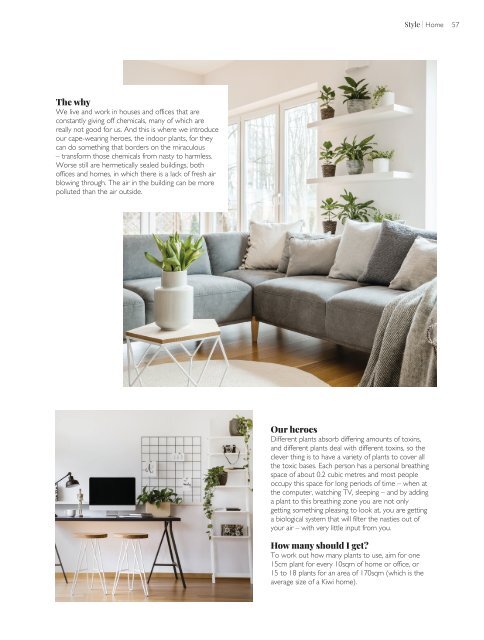Create successful ePaper yourself
Turn your PDF publications into a flip-book with our unique Google optimized e-Paper software.
<strong>Style</strong> | Home 57<br />
The why<br />
We live and work in houses and offices that are<br />
constantly giving off chemicals, many of which are<br />
really not good for us. And this is where we introduce<br />
our cape-wearing heroes, the indoor plants, for they<br />
can do something that borders on the miraculous<br />
– transform those chemicals from nasty to harmless.<br />
Worse still are hermetically sealed buildings, both<br />
offices and homes, in which there is a lack of fresh air<br />
blowing through. The air in the building can be more<br />
polluted than the air outside.<br />
Our heroes<br />
Different plants absorb differing amounts of toxins,<br />
and different plants deal with different toxins, so the<br />
clever thing is to have a variety of plants to cover all<br />
the toxic bases. Each person has a personal breathing<br />
space of about 0.2 cubic metres and most people<br />
occupy this space for long periods of time – when at<br />
the computer, watching TV, sleeping – and by adding<br />
a plant to this breathing zone you are not only<br />
getting something pleasing to look at, you are getting<br />
a biological system that will filter the nasties out of<br />
your air – with very little input from you.<br />
How many should I get?<br />
To work out how many plants to use, aim for one<br />
15cm plant for every 10sqm of home or office, or<br />
15 to 18 plants for an area of 170sqm (which is the<br />
average size of a Kiwi home).


















